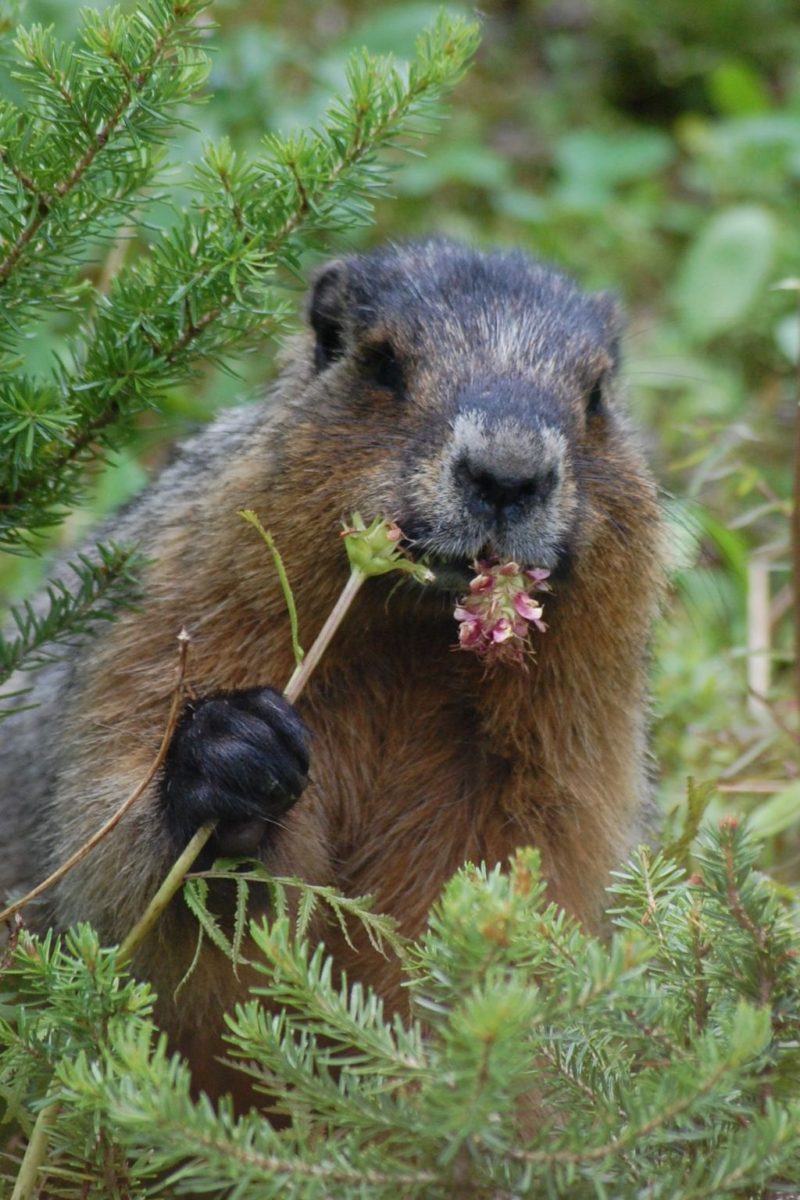
If holidays were high school kids, it’s easy to see who’s who: Christmas would be the cool kid who everybody wants to hang out with; Valentine’s Day would be the cheerleader who leads you on but always disappoints in the end; Halloween would be the Goth kid/Stoner, etc. etc.
Then there’s Groundhog Day. He seems easy to identify at first, right? He’s the kid who wears the fanny pack and the teacher describes as “not all there.”
So what’s with Groundhog Day? A portly rodent exits from its cave on Feb. 2, sees its shadow – or not – and the rest of us are doomed – or not – to six more weeks of hell frozen over? What? Why is it even a thing? Why do we continue to follow this ridiculous tradition?
Or is there something deeper to our fanny-pack-carrying friend?
…
“Squirrels are like Honda Civics of the rodent world; they’re not sufficient to base a holiday on. Groundhogs are more like Volvos or something, a little bit more obscure,” says St. Thomas philosophy professor Alan Hall.
Hall’s favourite public holiday (outside of Remembrance Day) is Groundhog Day. For him it’s not just a day where we gather outside in the cold to stare at a rodent’s hole for a few hours, it’s a metaphor for the interconnectedness of life and irrational hope.
“I think when you ask the question ‘why do people need hope?’ it implies it is possible to think about people without hope. I don’t know if that’s possible.”
For Hall, Groundhog Day will forever (and forever) be tied to the Bill Murray movie, in which a man must relive the same day repeatedly. In Hall’s mind, this channels the spirit of the holiday itself. We want tomorrow to be different, but instead we get as Yogi Berra put it, “déjà vu all over again.”
The other essential part of Groundhog Day is the illogical faith people put into believing that a small rodent can control the seasons.
“It’s absurd to pin meteorological things on a rodent. It’s essentially absurd, right? But so is our life. I think it points to the wonderful, irreducible, absurdity of our lives and that hope is inseparable from that.”
“This is why real life is like Groundhog Day: because Groundhog Day, in Groundhog Day, the hope that it expresses is essentially absurd. But there is something essentially absurd about hope, but it is no less real for all that.”
…
You’ve probably heard of Punxsutawney Phil or his Nova Scotia counterpart, Shubenacadie Sam. Now, loyal readers, what if I told you New Brunswick once upon a time had a groundhog of its own?
Back in the early 90s, CBC Saint John started their own Groundhog Day tradition by reporting on the local groundhog across the street from the station. “Fort Howe Howie” was his name, and he served a special role for the radio show.
“We needed a story for the next morning,” say Harvey McLeod, the producer of Information Morning at the time.
Even though he dedicated part of his show to following the furry rodent, McLeod acknowledges the icy desperation at the root of the holiday.
“By the time Groundhog Day comes around people are willing to do anything, even believe in foolishness like that.”
But that didn’t stop CBC from sending reporters out there. Howie never did come out on Groundhog Day, and eventually he faded from the minds of the CBC employees until, at last, McLeod finally saw him.
“There seems to me there was a dead groundhog in the middle of the street.”
…
“You need no more profound sort of expression of the absurdity of Groundhog Day,” says Hall after hearing of Howie’s fated doom.
“Don’t worry; it’s just a play, it doesn’t mean anything, it’s just going to disappear, like everything,” Hall says, paraphrasing Shakespeare’s Tempest.
“Think about Groundhog Day that way – it’s essentially absurd and that’s what makes it tell the great wonderful story about us.”
